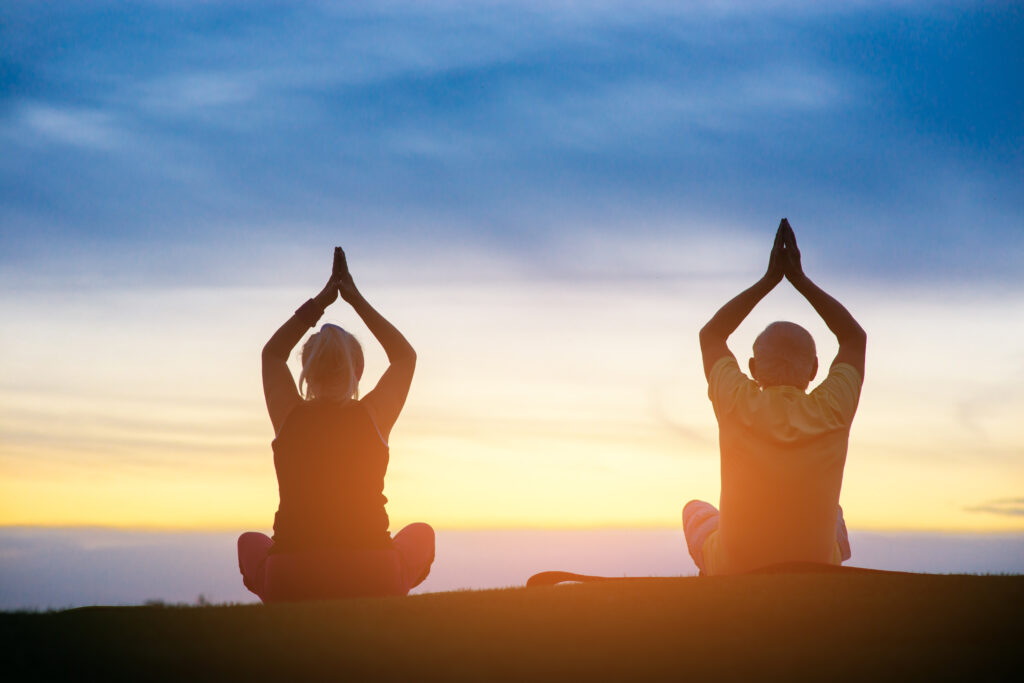In today’s fast-paced, technology-driven world, the ancient practice of yoga has emerged as a beacon of holistic wellness, captivating millions across the globe. Far beyond the physical postures and poses, yoga offers a profound journey of self-discovery, empowering individuals to cultivate a deeper connection between the mind, body, and spirit. Whether you’re a seasoned practitioner or a curious newcomer, the myriad benefits of this time-honored discipline are poised to transform your life in remarkable ways.
The Origins and Evolution of Yoga
Originating in India over 5,000 years ago, yoga has evolved from a niche practice to a global phenomenon, transcending cultural boundaries and captivating people of all ages, backgrounds, and fitness levels. The word “yoga” itself is derived from the Sanskrit root “yuj,” meaning “to yoke” or “to unite,” reflecting the fundamental principle of harmonizing the individual’s inner and outer realms. From the physical asanas (postures) to the meditative and spiritual dimensions, yoga has continuously expanded its reach, adapting to the needs and preferences of modern practitioners.
The Diverse Styles of Yoga
One of the key factors contributing to yoga’s widespread appeal is the vast array of styles and approaches available. Each tradition offers unique benefits, catering to the diverse needs and preferences of practitioners. Hatha yoga, with its focus on physical postures and breath control, is often considered the foundation for many other styles. Vinyasa yoga, known for its fluid, dynamic sequences, emphasizes the synchronization of movement and breath. Iyengar yoga, renowned for its precise alignment and use of props, is particularly beneficial for those seeking to improve flexibility and joint mobility. Restorative yoga, on the other hand, prioritizes deep relaxation and restoration, making it an ideal choice for those seeking stress relief and rejuvenation.
The Physical Benefits of Yoga

At the heart of yoga’s transformative power lies its profound impact on physical wellbeing. Consistent practice has been shown to enhance flexibility, strength, and balance, enabling practitioners to move with greater ease and confidence. The gentle, low-impact nature of yoga makes it an accessible form of exercise for individuals of all fitness levels, from sedentary individuals to elite athletes. Numerous studies have demonstrated yoga’s effectiveness in alleviating various musculoskeletal conditions, including chronic lower back pain, arthritis, and carpal tunnel syndrome.
Improved Flexibility and Mobility
One of the primary benefits of yoga is its ability to enhance flexibility and joint mobility. Through the systematic stretching and strengthening of the muscles, connective tissues, and joints, yoga helps to increase range of motion, reduce stiffness, and promote overall physical fluidity. This increased flexibility not only enhances physical performance but also reduces the risk of injury, making everyday movements more comfortable and effortless.
Increased Strength and Endurance
Contrary to the common misconception that yoga is solely a practice of flexibility, many styles of yoga incorporate challenging poses and sequences that build significant muscular strength and endurance. The isometric contractions and bodyweight exercises inherent in yoga practice engage and strengthen the major muscle groups, contributing to improved overall fitness and physical resilience.
Enhanced Balance and Proprioception
Yoga’s emphasis on balance and stability is a crucial aspect of its physical benefits. The practice of holding various poses, particularly those that challenge the body’s equilibrium, helps to improve proprioception – the body’s ability to sense its position and movement in space. This enhanced body awareness translates to better balance, coordination, and agility, which can be particularly beneficial for older adults and those recovering from injuries.
The Mental and Emotional Benefits of Yoga
Alongside its physical transformations, yoga’s profound impact on mental and emotional wellbeing is equally remarkable. The practice of yoga goes beyond the physical realm, delving into the realms of the mind and spirit, offering practitioners a holistic approach to personal growth and self-discovery.
Stress Reduction and Anxiety Management
One of the most widely recognized benefits of yoga is its ability to alleviate stress and anxiety. The combination of physical postures, controlled breathing, and meditation techniques inherent in yoga practice has been shown to activate the parasympathetic nervous system, which is responsible for the body’s rest-and-digest response. This physiological shift helps to counteract the detrimental effects of chronic stress, promoting a sense of calm, clarity, and emotional resilience.
Improved Mood and Emotional Regulation
Numerous studies have demonstrated yoga’s efficacy in improving mood and emotional regulation. The practice of yoga has been linked to increased production of feel-good neurotransmitters, such as serotonin and dopamine, which can elevate mood and enhance overall emotional well-being. Additionally, the mindfulness and self-awareness cultivated through yoga can help individuals better recognize and manage their emotional responses, fostering a greater sense of emotional intelligence and resilience.
Enhanced Cognitive Function and Focus
Yoga’s impact on the brain is equally remarkable. Regular practice has been associated with improved cognitive function, including enhanced memory, attention, and problem-solving skills. The focused, present-moment awareness cultivated during yoga sessions can help to strengthen neural pathways, leading to increased mental clarity, focus, and adaptability – all of which are crucial for personal and professional success.
Yoga’s Impact on Chronic Conditions

Beyond its general health benefits, yoga has also emerged as a valuable complementary therapy for individuals living with various chronic conditions. The holistic approach of yoga, which addresses the mind-body connection, has shown promising results in managing and even improving the symptoms of these persistent ailments.
Alleviation of Chronic Pain
Yoga has been recognized as an effective intervention for individuals suffering from chronic pain, particularly in the lower back region. The gentle, yet targeted, stretching and strengthening exercises, combined with the mindfulness-based techniques, can help to reduce inflammation, improve flexibility, and enhance pain management strategies.
Improved Cardiovascular Health
Numerous studies have highlighted yoga’s positive impact on cardiovascular health. Regular practice has been linked to improved blood pressure, reduced cholesterol levels, and enhanced heart rate variability – all of which are crucial indicators of cardiovascular wellness. The combination of physical postures, breath control, and relaxation techniques inherent in yoga can help to regulate the body’s autonomic nervous system, promoting a healthier cardiovascular profile.
Alleviation of Symptoms in Neurological Conditions
Emerging research suggests that yoga may also offer benefits for individuals living with neurological conditions, such as Parkinson’s disease and multiple sclerosis. The practice’s emphasis on balance, coordination, and mind-body integration can help to improve motor function, reduce tremors, and enhance overall quality of life for those affected by these conditions.
Yoga’s Accessibility and Adaptability
One of the remarkable aspects of yoga is its accessibility and adaptability, making it an inclusive practice that can be tailored to the unique needs and abilities of individuals from all walks of life. Whether you’re a seasoned athlete, a person with limited mobility, or someone seeking to embark on a wellness journey, there is a style of yoga that can cater to your specific requirements.
Modifications and Adaptations
Yoga’s versatility allows for a wide range of modifications and adaptations, ensuring that practitioners of all levels can participate and reap the benefits. From the use of props and supports to the incorporation of chair-based or standing yoga, the practice can be adjusted to accommodate physical limitations, injuries, or special needs, making it an inclusive and accessible form of exercise.
Accessibility for All Ages and Fitness Levels
Contrary to the common misconception that yoga is only for the young and flexible, the practice can be enjoyed by individuals of all ages and fitness levels. From gentle, restorative yoga for older adults to dynamic, high-intensity classes for athletes, the diversity of yoga styles ensures that there is an option suitable for everyone, regardless of their starting point or physical abilities.
Online and In-Person Opportunities
The rise of online yoga platforms and the increasing availability of in-person studios have further expanded the accessibility of this practice. Whether you prefer the convenience of at-home sessions or the community-driven experience of a studio class, there are ample opportunities to explore and engage with yoga in a way that aligns with your preferences and lifestyle.
The Holistic Approach to Wellness

At the heart of yoga lies a holistic approach to wellness, one that transcends the physical realm and encompasses the mind, body, and spirit. This comprehensive perspective on health and wellbeing sets yoga apart from many other forms of exercise, offering practitioners a transformative journey of self-discovery and personal growth.
The Mind-Body Connection
Yoga’s emphasis on the mind-body connection is a fundamental aspect of its holistic approach. By integrating physical postures, controlled breathing, and meditation techniques, yoga helps to bridge the gap between the conscious and subconscious realms, empowering individuals to cultivate a deeper awareness of their physical, mental, and emotional states.
The Spiritual Dimension
While the physical benefits of yoga are well-documented, the practice also holds a profound spiritual dimension that has captivated practitioners for centuries. Through the exploration of ancient philosophies, rituals, and meditative practices, yoga offers a pathway to self-discovery, personal growth, and a deeper connection with the universal energies that govern our existence.
The Importance of Mindfulness
Underpinning the holistic approach of yoga is the cultivation of mindfulness – the practice of being present, attentive, and non-judgmental in the current moment. This heightened state of awareness, fostered through the various elements of yoga, can have a transformative impact on an individual’s relationship with themselves, their environment, and their overall wellbeing.
The Transformative Power of Consistent Practice
Unlocking the full potential of yoga’s benefits requires a commitment to consistent practice. Like any worthwhile endeavor, the transformative journey of yoga is not always an effortless one, but the rewards that emerge from dedicated practice are truly remarkable.
The Compounding Effects of Regular Practice
As with any skill or discipline, the more consistently one engages with yoga, the more profound and lasting the benefits become. Over time, the physical, mental, and emotional improvements compound, leading to a heightened sense of overall wellbeing, increased resilience, and a deeper understanding of oneself.
The Importance of Patience and Persistence
Yoga is a practice that values patience, persistence, and self-compassion. The path to mastery is not a linear one, and embracing the ebbs and flows of the journey is essential. By approaching yoga with an open mind, a willingness to learn, and a commitment to continuous growth, practitioners can unlock the true transformative power of this ancient practice.
The Supportive Role of Community
While yoga can be a deeply personal and introspective practice, the power of community cannot be overstated. Engaging with like-minded individuals, whether in a studio setting or through online platforms, can foster a sense of belonging, accountability, and mutual inspiration – all of which can further deepen one’s yoga journey and enhance the overall experience.
Conclusion: Embracing the Yoga Lifestyle

As you embark on your yoga journey, remember that it is not merely a form of exercise, but a holistic lifestyle that can profoundly transform your physical, mental, and emotional well-being. By embracing the principles and practices of yoga, you unlock a world of possibilities – from enhanced physical resilience to improved mental clarity, from heightened emotional intelligence to a deeper connection with the world around you.
Whether you are a seasoned practitioner or a curious newcomer, the transformative power of yoga awaits. Embrace the challenge, cultivate patience and persistence, and allow this ancient discipline to guide you towards a more balanced, fulfilling, and vibrant life. Namaste.